What is SLA and How to Write SLA’s
In any organization customer service is one of the topmost priorities. When talking about customer service, we cannot ignore the rules of protecting the customer and the organization. These rules serve as a guide as to which extent an organization would go to get customer satisfaction. Almost all service providers nowadays make use of something called a Service Level Agreement (SLA). This is widely used by organizations that provide any kind of IT services.
Let us learn in detail about what SLAs are and how it helps both the customer and the service provider. Also, know about PeppyBiz, the best solution for all your business-related problems.
What is SLA?
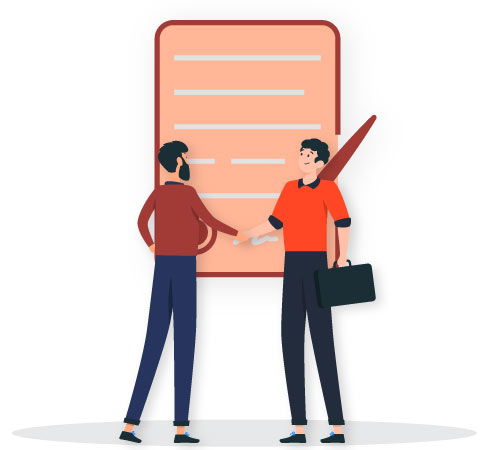
An SLA is essentially a document that helps the users understand the service that an organization offers. It also specifies what gets covered in the service. This lets the user understand the terms of service and use them wisely.
No matter the organization, the Service Level Agreement’s purpose remains the same. To clearly outline the expected level of service. The Service Level Agreement must be carefully drafted to provide maximum service value to the end-user. It should also be practical for service providers to render such services.
Features of an SLA
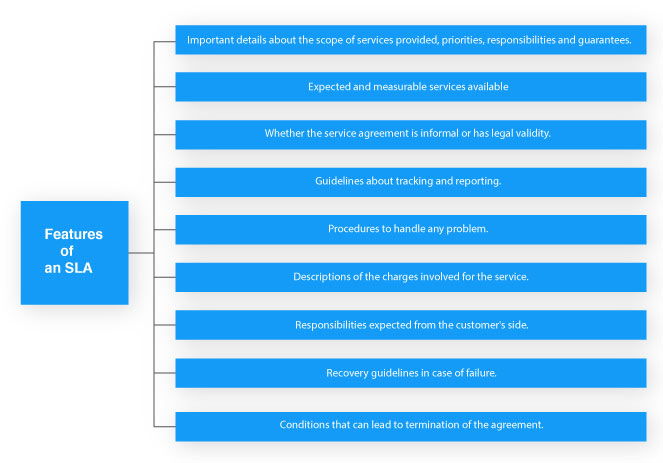
A Service Level Agreement includes the following features:
- Important details about the scope of services provided, priorities, responsibilities, and guarantees.
- Expected and measurable services available
- Whether the service agreement is informal or has legal validity.
- Guidelines about tracking and reporting.
- Procedures to handle any problem.
- Descriptions of the charges involved for the service.
- Responsibilities expected from the customer’s side.
- Recovery guidelines in case of failure.
- Conditions that can lead to termination of the agreement.
These are the must-have features of an SLA. But an organization might decide to include more if there’s room for doubt.
Need for an SLA
Creating a proper Service Level Agreement can go a long way in improving the trust of your customers. Humans tend to change their requirements from time to time. So it is necessary to establish what the scope will be.
By defining this, everyone involved is bound to know what the scope is. This also ensures that the end-user is not left unsatisfied because the service receiver knows what they signed up for.
This sounds important, doesn’t it? You are right. You must place the utmost importance on developing an SLA. You should resort to a professional service that specializes in creating a professional Service Level Agreement.
How to Write SLAs?
There are many ways in which you can write an SLA. The following are the parts that you should include in a Service Level Agreement.
1. Service Level Agreement
The first page of your document should have:
a. Version details: Like every other document in an organization, the SAL also undergoes many revisions. Thus including the version details if the SAL becomes very important.
b. Document change history: This includes the last reviewed date and the next review date.
c. Document approvals: This section ensures accountability within an organization, streamlined through automated contract approvals. This feature not only speeds up the approval workflow but also centralizes all contract activities, ensuring that every agreement is processed efficiently and on time.
2. Agreement overview
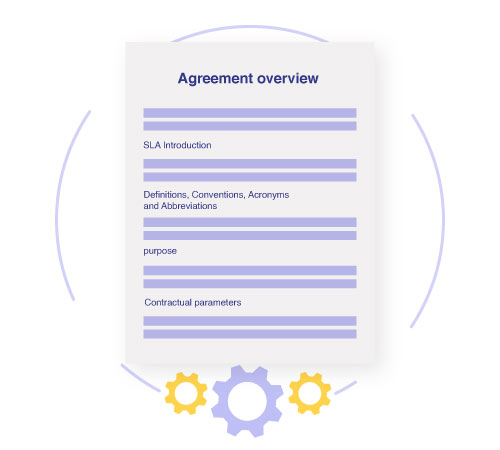
There are four components in this section of the SLA:
a) SLA Introduction
This part mainly comprises a short introduction along with the mention of the parties concerned. This also contains the service scope and contract duration for the service.
b) Definitions, Conventions, Acronyms and Abbreviations
This is explaining the terms that the organization has used to frame this document. These terms usually represent services, metrics, roles, scope, parameters, and other contract-related details.
c) purpose
This section of a Service Level Agreement mentions its purpose. It lists out all the occasions that an SLA could come in handy. This is very useful because it conveys the limitations of the service provided.
d) Contractual parameters
This section highlights the application, modification, and limitations. This part of the Service Level Agreement also talks about the termination of the agreement.
3. Service Agreement
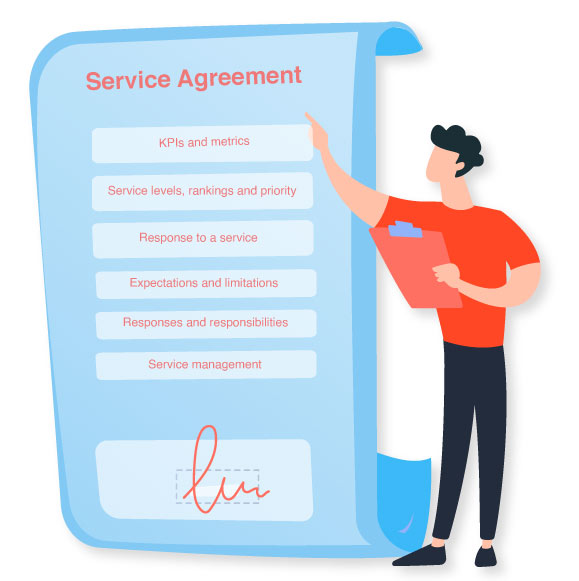
This is the longest section of the Service Level Agreement document. This contains the following components:
a) KPIs and metrics

By referring to the Key Performance Indicators and metrics, the customer can know the service’s performance.
b) Service levels, rankings, and priority
This is the place the user refers to, in need of ranking their issue. Based on the rank of the issue, the problem gets handled accordingly.
For example, if the server is down, the severity level is of the highest order, and the response to that is immediate.
c) Response to a service
This usually has descriptive service information and performance metrics. It describes under which category the service falls. It also describes using which metric the customer or supplier measures the performance.
d) Expectations and limitations
This subsection contains the information on what the SLA doesn’t cover. The conditions, scope, and application do not apply to the exceptions listed here.
For example, in a customer-based SLA, the manufacturer mentions that the warranty is void under certain conditions. This kind of statement comes under this part of the SLA.
e) Responses and responsibilities
In this section, you will find the responsibilities of both the service provider and the customer. Adhering to these responsibilities lets the customer and service provider be on healthy terms.
For example, the customer should provide all necessary access for the smooth running of the app. Likewise, a service provider will help with any necessary troubleshooting that can solve a problem.
f) Service management
This subsection is further divided into the following component:
- Service availability: The time limits in a day within which the support is available to the customers get reported here. The customers heavily access this section of the SLA since every customer desires a timely response.
4. Reference and Glossary
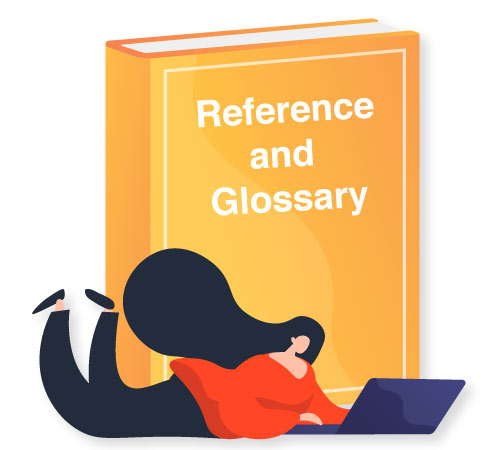
This section in the Service Level Agreement document mostly contains the list of reference documents. Most SLAs also have their short terms and conditions listed in this section.
5. Appendix
This here is the section that lists the information that doesn’t belong in any particular headings. This is quite useful when you have to provide information about your services. The customer finds the options they can choose to benefit from.
These are the lengthiest components of an SLA summarised.
What is so special about PeppyBiz?
Being attentive to all these details sound excruciatingly long, doesn’t it? A smart person will opt for an easy and more efficient alternative. Such an alternative is resorting to PeppyBiz solutions. Since Service Level Agreement is all about the level of help a service provider can offer, we can provide you with helpdesk software!
Fret not; you can develop and integrate your SLA objectives into the software with ease. Thus the software will be handling all kinds of tasks like prioritizing based on the SLA. You can set deadlines for various inquiries and assign them to your team accordingly. Handling Service Level Agreement is not the only thing our software does.
Check out the following features:
1. Reply to emails with shared inbox: This saves a lot of time because anyone can respond to queries from the helpdesk email now. They can also view the archive of all sent and received emails.
2. Set up SLAs for urgent mails: You will never miss deadlines and ensure timely support to all your customers. This is possible with the integration of your SLA with the software. You can now categorize and take action on the queries.
3. Collaborate missing deals over mails: The advantage of a shared inbox is that you can always access emails managed by other team members.
4. Track your team’s performance: This feature lets you analyze every team member’s performance. If a customer is not satisfied with the support, you can access the emails to know exactly why.
5. Set up routing rules: Establish specific conditions to categorize each incoming query, and route it to the concerned department.
6. Save replies: The quick reply option of the software lets you save FAQs’ answers, saving your time.
7. Tag conversations: The software assigns tags to an incoming query by analyzing the keywords. This allows for easy categorization and workflow automation.
Conclusion
If you are creating a Service Level Agreement, be sure to include all the sections mentioned earlier. Preparing an SLA might look like a complicated task, but customer satisfaction drastically improves after laying out the SLA. The SLA also prevents the organization’s resources from being over-exploited.
In the case of SaaS, an organization must provide Service Level Agreements so that the customer knows when and how to contact the service provider for support. Constant check on the metrics improves the overall performance of a service.
PeppyBiz’s software for helpdesk management provides you with all the resources you need to efficiently execute SLAs. With the help of AI and machine learning, every process becomes automated. In this pandemic ridden world, it is safe to say that remote work is on the rise. The software and business solutions from us will let you grow your business from the safety of your home. Schedule a free demo today to learn more about the services we offer.
